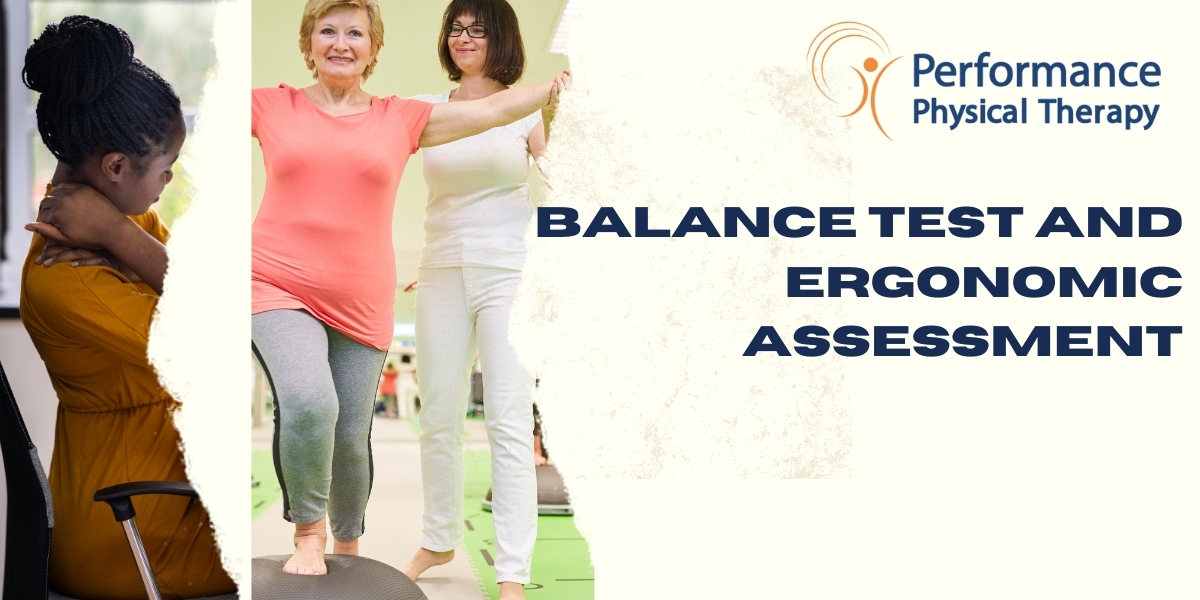Maintaining optimal balance is crucial for overall well-being and daily functionality. As we age or encounter physical challenges, our ability to stay balanced can diminish, leading to a higher risk of falls and injuries. One effective way to address and improve balance issues is through balance testing, which can be complemented by a thorough ergonomic assessment. This article explores the role of balance testing, how ergonomic assessments contribute to improving balance, and the holistic approach taken by services such as those offered by PPTandFitness.
Understanding Balance Testing
Balance testing is designed to evaluate an individual’s ability to maintain equilibrium in various conditions. This assessment often involves a series of exercises and tasks that measure stability, coordination, and reaction to external challenges. balance test help identify specific issues such as:
- Postural Instability: Difficulty in maintaining a stable posture while standing or moving.
- Coordination Deficits: Problems with coordinating movements, which can impact balance.
- Proprioceptive Challenges: Issues with the body’s ability to sense its position in space, affecting balance.
Common Balance Tests
- Romberg Test: Evaluates balance and proprioception by asking the individual to stand with feet together, eyes closed, and observing for swaying.
- Berg Balance Scale: Assesses balance through a series of functional tasks like standing on one foot, reaching, and transferring.
- Dynamic Gait Index: Measures balance while walking and performing various tasks to simulate real-life scenarios.
The Role of Ergonomic Assessment
An ergonomic assessment involves analyzing an individual’s workstation, posture, and movements to identify factors that might contribute to discomfort or injury. This assessment is particularly useful for those who spend long hours at a desk or in repetitive physical activities. Ergonomic assessments aim to:
- Optimize Workspace Design: Ensure that the workstation setup supports good posture and minimizes strain.
- Reduce Injury Risks: Identify and correct improper movements or postures that could lead to musculoskeletal disorders.
- Enhance Comfort and Efficiency: Adjust the workspace to improve comfort and productivity.
How Ergonomic Assessment Enhances Balance
While ergonomic assessments are typically associated with reducing workplace injuries, they also play a significant role in improving balance. Here’s how:
- Improved Posture: Proper ergonomic setup promotes better posture, which can directly impact balance. For example, a well-adjusted chair and desk can reduce the risk of postural issues that may affect stability.
- Reduced Physical Strain: By minimizing awkward postures and repetitive movements, ergonomic assessments help prevent muscle strain, which can indirectly support better balance.
- Enhanced Movement Patterns: Ergonomic recommendations often include exercises and stretches that improve flexibility and strength, contributing to overall balance.
PPTandFitness: A Comprehensive Approach to Balance Therapy
At PPTandFitness, balance therapy services are designed to address balance issues through a multi-faceted approach. Their services include a range of techniques aimed at enhancing stability, coordination, and overall functional ability. Here’s a look at their approach:
Personalized Balance Therapy
Balance therapy at PPTandFitness involves a detailed assessment to identify balance-related issues. This includes evaluating strength, flexibility, proprioception, and vestibular function. The therapy is tailored to individual needs, ensuring a personalized approach that addresses specific balance challenges.
- Strength and Flexibility Training: Core stability and lower extremity strength are crucial for maintaining balance. Targeted exercises help in strengthening these areas, improving alignment, and enhancing control.
- Proprioceptive Training: Specialized exercises enhance the body’s ability to sense its position in space, aiding in better movement adjustments and control.
- Vestibular Rehabilitation: For those experiencing dizziness or vertigo, vestibular rehabilitation helps alleviate symptoms and restore balance.
- Gait and Balance Training: Refining walking patterns and balance reactions through various tasks and exercises helps improve mobility and confidence in different environments.
Conclusion
Balance testing and ergonomic assessment are essential components of maintaining and improving balance and overall well-being. While balance testing provides insights into an individual’s stability and coordination, ergonomic assessments help prevent balance issues by optimizing workspace and movement patterns. The holistic approach offered by PPTandFitness exemplifies how combining these assessments can lead to comprehensive improvements in balance and functionality. By addressing both personal and environmental factors, individuals can achieve better stability, reduce the risk of falls, and enhance their quality of life.

